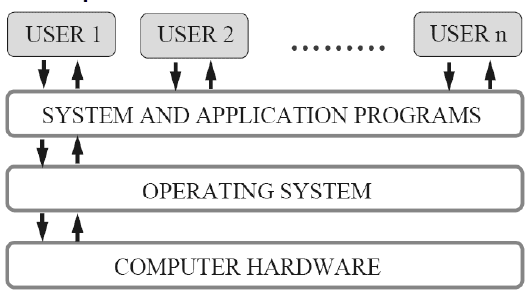Digital Signal Processing (DSP)
Digital Signal Processing (DSP) involves the manipulation of signals after they have been converted from analog to digital form. DSP is essential in various applications, including audio and speech processing, telecommunications, radar and sonar, medical imaging, and more. Here is a detailed overview of DSP, covering its principles, techniques, and applications:
Principles
of DSP
- Sampling:
The process of converting a continuous analog signal into a discrete
digital signal by taking samples at regular intervals.
- Nyquist Theorem:
To avoid aliasing, the sampling rate must be at least twice the highest
frequency present in the signal.
- Quantization:
The process of mapping a continuous range of values into a finite range of
discrete values. It introduces quantization noise.
- Digital Filters:
Algorithms that process digital signals to enhance or suppress certain
aspects of the signal.
- Finite Impulse Response (FIR) Filters: Have a finite duration of response and are
inherently stable.
- Infinite Impulse Response (IIR) Filters: Have an infinite duration of response and can
achieve a given frequency response with fewer coefficients than FIR
filters.
Techniques
in DSP
- Transformations:
- Fourier Transform (FT): Converts a signal from the time domain to the
frequency domain.
- Fast Fourier Transform (FFT): An efficient algorithm for computing the Discrete
Fourier Transform (DFT).
- Discrete Cosine Transform (DCT): Used in image compression (e.g., JPEG).
- Time-Frequency Analysis:
- Short-Time Fourier Transform (STFT): Analyzes signals whose frequency content changes
over time.
- Wavelet Transform: Provides a time-frequency representation of a signal
with varying resolutions.
- Convolution and Correlation:
- Convolution:
Combines two signals to form a third signal, often used in filtering.
- Correlation:
Measures the similarity between two signals.
- Modulation and Demodulation:
- Amplitude Modulation (AM), Frequency Modulation (FM), and Phase
Modulation (PM): Techniques for encoding information onto a carrier
signal.
- Demodulation:
Extracting the original information from the modulated signal.
- Compression:
- Lossless Compression: Reduces file size without losing any information
(e.g., FLAC for audio).
- Lossy Compression: Reduces file size by discarding some information,
usually imperceptible (e.g., MP3 for audio, JPEG for images).
- Error Detection and Correction:
- Parity Checks,
Checksums, and Cyclic Redundancy Checks (CRC): Techniques
for detecting errors in digital data.
- Error-Correcting Codes: Such as Hamming codes and Reed-Solomon codes, used
to correct errors.
Applications
of DSP
- Audio and Speech Processing:
- Noise Reduction:
Removing unwanted noise from audio signals.
- Echo Cancellation: Removing echoes in communication systems.
- Speech Recognition: Converting spoken words into text.
- Audio Compression: Reducing the size of audio files (e.g., MP3).
- Image and Video Processing:
- Image Enhancement: Improving image quality by adjusting contrast,
brightness, etc.
- Compression:
Reducing the size of image and video files (e.g., JPEG for images, MPEG
for videos).
- Object Detection and Recognition: Identifying and classifying objects within images
and videos.
- Telecommunications:
- Modulation/Demodulation: Encoding and decoding data for transmission.
- Error Correction: Ensuring data integrity over noisy channels.
- Channel Equalization: Compensating for signal distortion due to the
transmission medium.
- Medical Imaging:
- Image Reconstruction: Constructing images from raw data (e.g., CT scans,
MRI).
- Filtering:
Enhancing specific features in medical images.
- Radar and Sonar:
- Target Detection: Identifying objects and their distances.
- Signal Filtering: Reducing noise and enhancing signal clarity.
Advantages
of DSP
- Precision and Accuracy: Digital systems can achieve high precision and
accuracy in signal processing.
- Flexibility:
DSP algorithms can be easily modified and adapted for different
applications.
- Noise Immunity:
Digital systems are less susceptible to noise and signal degradation
compared to analog systems.
- Storage and Transmission: Digital signals can be easily stored and transmitted
without significant loss of quality.
DSP
Hardware and Software
- DSP Processors:
Specialized microprocessors optimized for DSP tasks, featuring high-speed
arithmetic operations and parallel processing capabilities.
- FPGA (Field-Programmable Gate Arrays): Configurable hardware devices that can be programmed
to perform DSP operations efficiently.
- Software Tools:
MATLAB, LabVIEW, and other specialized DSP software provide environments
for designing, testing, and implementing DSP algorithms.
DSP is a fundamental technology in
modern electronics and communication systems, enabling efficient and
sophisticated processing of digital signals across a wide range of
applications.
4o



Comments
Post a Comment